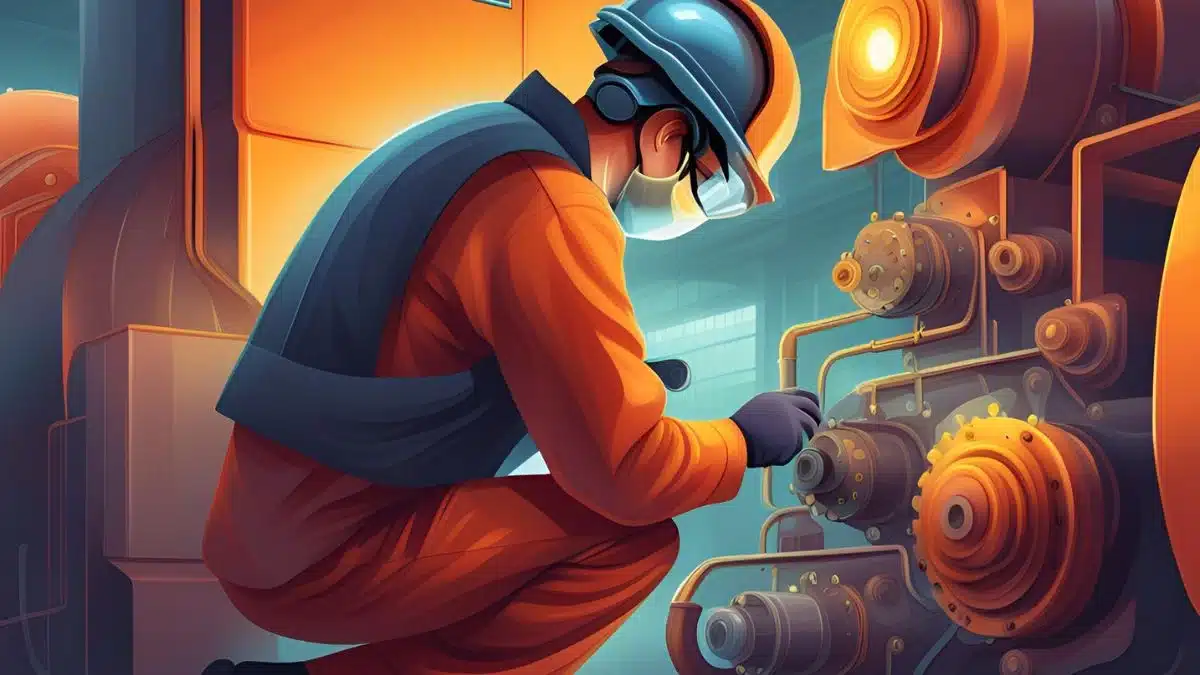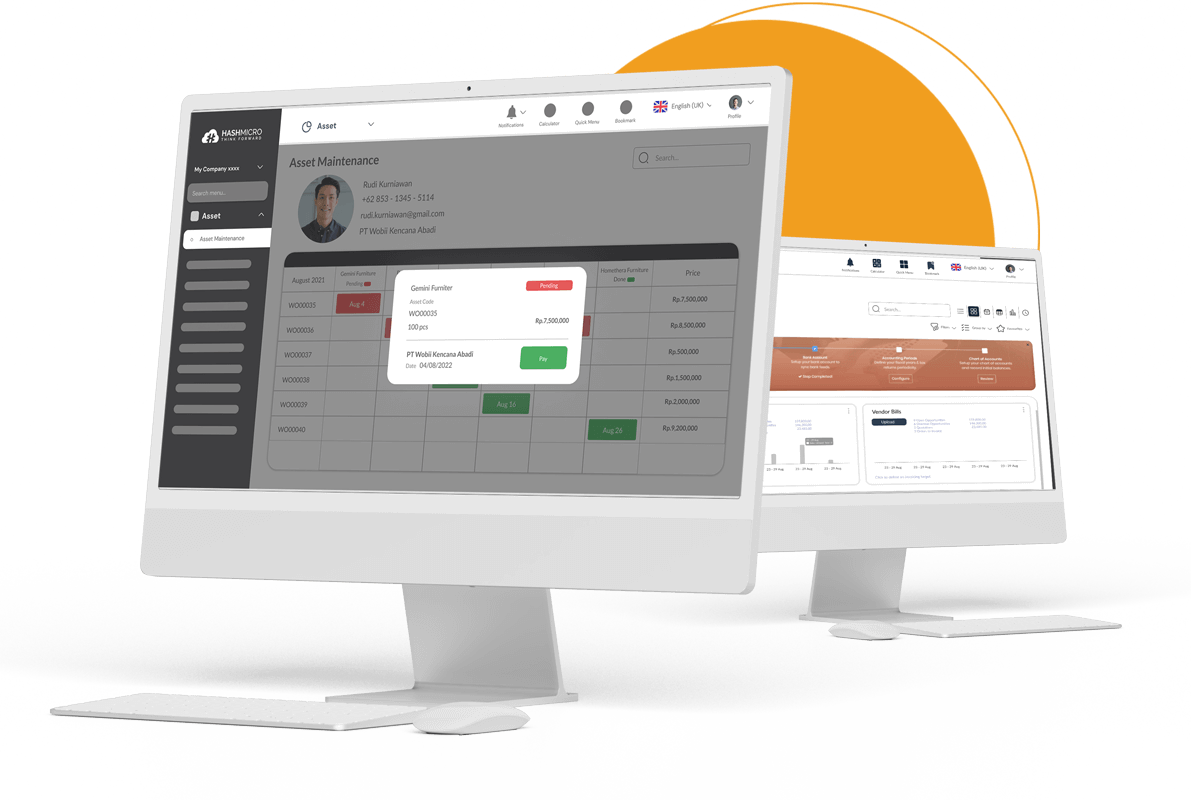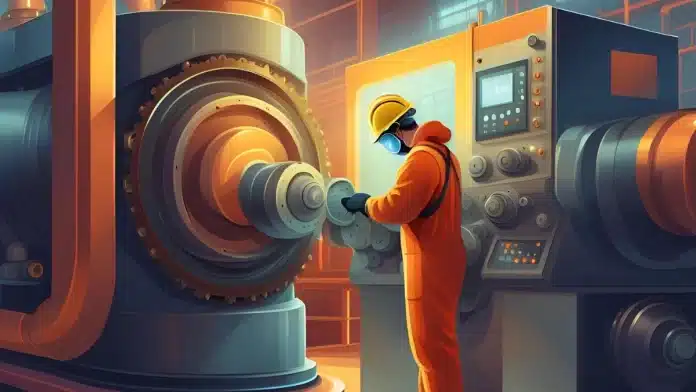Who wouldn’t want to save up to 40% on machine maintenance costs? Through preventive maintenance, this cost-effectiveness can be achieved. Hay naku! Wouldn’t you like to reduce your expenses by this much?
For the same reason, many employers in the Philippines are now implementing preventive maintenance. However, if you’re new to this, chill lang! The following article will provide a complete guide on preventive maintenance meaning, types, and benefits.
Be sure to stay until the end to discover the proven strategies used by thousands of Southeast Asian entrepreneurs to implement efficient and optimized preventive maintenance systems. Now, without further ado, let’s start the discussion!
Key Takeaways
|
Table of Content
Content Lists
What is Preventive Maintenance?
Preventive maintenance (PM) is a systematic approach to regularly maintaining equipment and assets, ensuring they operate efficiently while reducing the risk of costly, unexpected failures. A proactive maintenance strategy involves planning and scheduling maintenance activities before any issues surface.
This approach helps businesses avoid potential technical issues by monitoring the condition of their equipment closely. Regular inspections, adjustments, and repairs are carried out according to a predefined schedule, reducing the likelihood of operational interruptions.
10 Types of Preventive Maintenance You Should Know
Business People, preventive maintenance has 10 types that you must pay attention to. These types are divided based on how maintenance is implemented. Tiyakin mong alam mo ang tamang diskarte para sa daloy ng trabaho ng iyong kumpanya para masiguro ang mas maayos at epektibong operasyon.
- Periodic maintenance: Scheduled at regular intervals, regardless of equipment condition. For example, a factory might perform monthly inspections on all machinery using a preventive maintenance checklist.
- Predictive maintenance: Uses real-time data and monitoring tools to forecast when equipment might fail. An example would be using sensors to track vibration levels in motors.
- Perspective maintenance: Focuses on understanding how equipment deteriorates over time. This helps businesses adapt strategies to specific wear patterns.
- Usage-based maintenance: Triggered based on actual equipment usage, such as hours of operation. For instance, vehicles may require preventive asset maintenance software every 10,000 kilometres.
- Risk-based maintenance: Prioritizes assets based on their risk of failure. Critical machinery with higher operational impact gets more attention.
- Time-based maintenance: Maintenance is scheduled after a fixed period. For example, HVAC systems are serviced every six months regardless of condition.
- Condition-based maintenance: Maintenance is done when specific indicators, like temperature or pressure, suggest wear. For example, oil changes when viscosity drops.
- Meter-based maintenance: Scheduled based on usage metrics like energy consumption or mileage. An example is vehicle maintenance after 50,000 miles.
- Calendar-based maintenance: Follows a fixed schedule, such as annual servicing of heating systems before winter.
- Failure-finding maintenance: Identifies hidden failures in protective devices, like fire alarms, ensuring they function correctly when needed.
The Difference Between Predictive and Preventive Maintenance
 Here is the difference between preventive maintenance and predictive methods, which often confuses business people. Pay close attention so you don’t get mixed up and make the wrong choice.
Here is the difference between preventive maintenance and predictive methods, which often confuses business people. Pay close attention so you don’t get mixed up and make the wrong choice.
| Aspect | Preventive Maintenance | Predictive Maintenance |
| Approach | Scheduled maintenance at regular intervals | Maintenance based on real-time data and equipment condition |
| Trigger | Time-based or usage-based intervals | Condition of equipment, monitored by sensors or data |
| Cost | Lower initial cost, but can lead to unnecessary tasks | Higher initial cost due to monitoring tools, but more efficient in the long run |
| Downtime | Prevents downtime but may still result in unnecessary stops | Minimizes downtime by addressing issues only when needed |
| Resource utilization | This can result in over-maintenance or under-maintenance | Ensures optimal use of resources based on actual condition |
| Data dependency | Minimal reliance on data | Heavily reliant on real-time data and advanced analytics |
| Efficiency | Preventive but may lead to unnecessary repairs | Highly efficient, addressing only imminent failures |
Preventive and predictive maintenance each offer advantages, but preventive maintenance shines by stopping issues before they occur, ensuring smooth operations. However, automating these strategies with Asset Management Software will enhance equipment reliability and optimize resources efficiently.
To learn more about how these systems can streamline maintenance tasks and minimize costs, take your first step by checking out its pricing schemes within the asset management software below.

The Difference Between Preventive and Reactive Maintenance
Preventive and reactive maintenance represent two different approaches to managing equipment care. Here’s a preventive maintenance examples and comparison to highlight their distinctions:
| Aspect | Preventive Maintenance | Reactive Maintenance |
| Approach | Scheduled maintenance at regular intervals | Maintenance after equipment failure occurs |
| Trigger | Time-based or usage-based intervals | Equipment failure or breakdown |
| Cost | Planned costs for regular servicing | Lower upfront cost but higher long-term repair costs |
| Downtime | Minimizes downtime by preventing failures | Increased downtime due to unplanned repairs |
| Resource utilization | Efficient allocation of resources through scheduled tasks | Inefficient resource use due to emergency repairs |
| Data dependency | Minimal data dependency, based on fixed schedules | No data dependency, purely reactive |
| Efficiency | Prevents unnecessary failures and optimizes performance | It can be inefficient as issues are addressed only after breakdowns |
Advantages and Disadvantages of Using Preventive Maintenance
Preventive maintenance offers a proactive approach to managing equipment and assets, ensuring smoother operations and reducing the risk of unexpected failures. However, like any strategy, it comes with advantages and disadvantages that businesses must consider.
Advantages:
- Reduces unexpected downtime
- Extends equipment lifespan
- Improves workplace safety
- Provides predictable scheduling
- Lowers long-term repair costs
Disadvantages:
- Needs regular monitoring
- Takes time to implement effectively
- Involves strategic planning
Transform Your Complex Maintenance Into Automatic Asset Management from HashMicro
 Maraming uri ng preventive maintenance. Alin ang tamang pagpipilian para sa’yo? Ano ang unang hakbang kung isa kang negosyanteng upper-middle class na laging abala? Huwag mag-alala, sabay nating tuklasin ang solusyon!
Maraming uri ng preventive maintenance. Alin ang tamang pagpipilian para sa’yo? Ano ang unang hakbang kung isa kang negosyanteng upper-middle class na laging abala? Huwag mag-alala, sabay nating tuklasin ang solusyon!
Using an asset management system as the best automated maintenance solution is no longer a secret of successful businesses. As Southeast Asia’s best preventive maintenance software provider, you need to consider HashMicro. This vendor offers countless benefits, including a free demo, free added users, etc.
In addition, HashMicro also offers many comprehensive features that have been recognized by 1750 businesses, such as Changi Airport, Brinks, and Bank of China. Those features are:
- Preventive maintenance scheduling: Easily create asset maintenance schedules to prevent unexpected operational disruptions, ensure that all assets remain in good working order, & extend asset life.
- Asset stocktake with barcode: Use barcodes to report asset status (breakdown, operative, missing, found, etc.) into the system.
- Asset maintenance budget: Ensure adherence to set budgets, optimize resource allocation, avoid unexpected costs, and extend the overall life of their assets.
- GPS tracking: GPS tracking is used to accurately and in real time track asset locations, which can increase the visibility of company assets’ locations.
- Asset cost reporting: Comprehensive report on costs incurred for asset maintenance.
Conclusion
Preventive maintenance ensures equipment longevity, minimizes downtime and promotes operational efficiency. By proactively addressing potential issues, businesses can avoid costly repairs and improve safety and performance.
Consider automating your preventive maintenance process with HashMicro’s asset management software. This powerful tool allows seamless scheduling, monitoring, and reporting, helping you manage assets more efficiently. Try a free demo today and experience how this solution can transform your maintenance strategy.

FAQ About Preventive Maintenance
-
What is an example of preventive maintenance?
Common examples of preventive maintenance tasks include regular cleaning, lubrication, part replacements, and equipment repairs. The scheduling for these tasks varies depending on the type of equipment being maintained.
-
What are the benefits of preventive maintenance?
The benefits of performing preventive maintenance include extending equipment lifespan, reducing downtime, lowering reactive repair requests, managing compliance and inspection needs, and preventing costly emergency repairs.
-
What is the goal of preventive maintenance?
The goal of preventive maintenance is to stop equipment failures before they happen and lower the chance of accidents. By proactively minimizing risks, you and your team can focus on optimizing what’s working instead of repairing breakdowns.




































